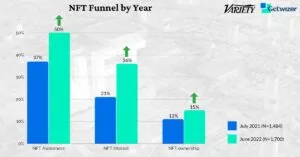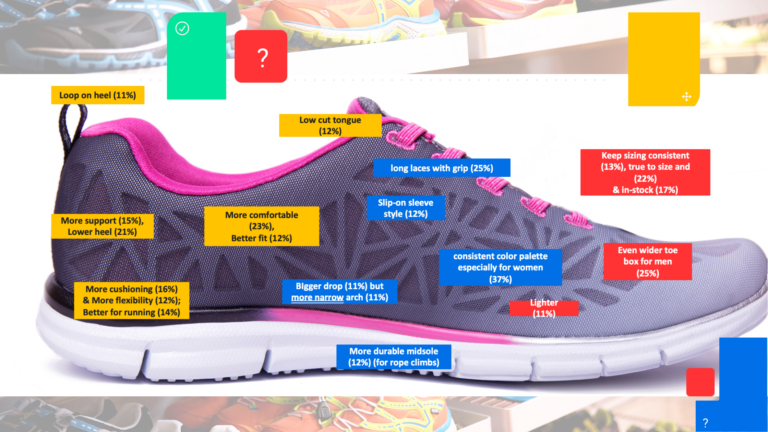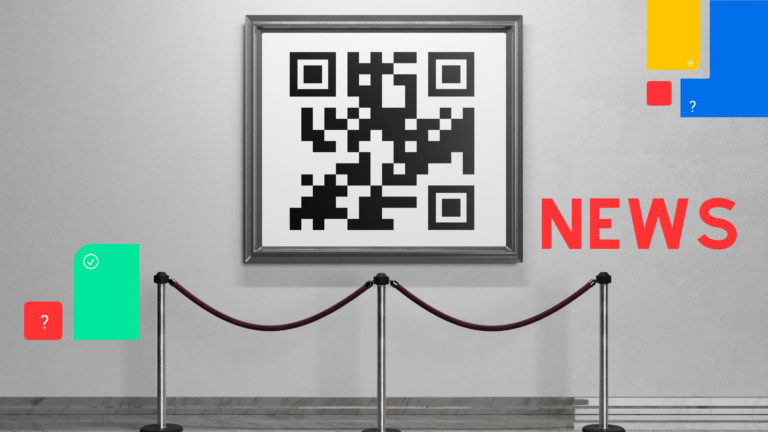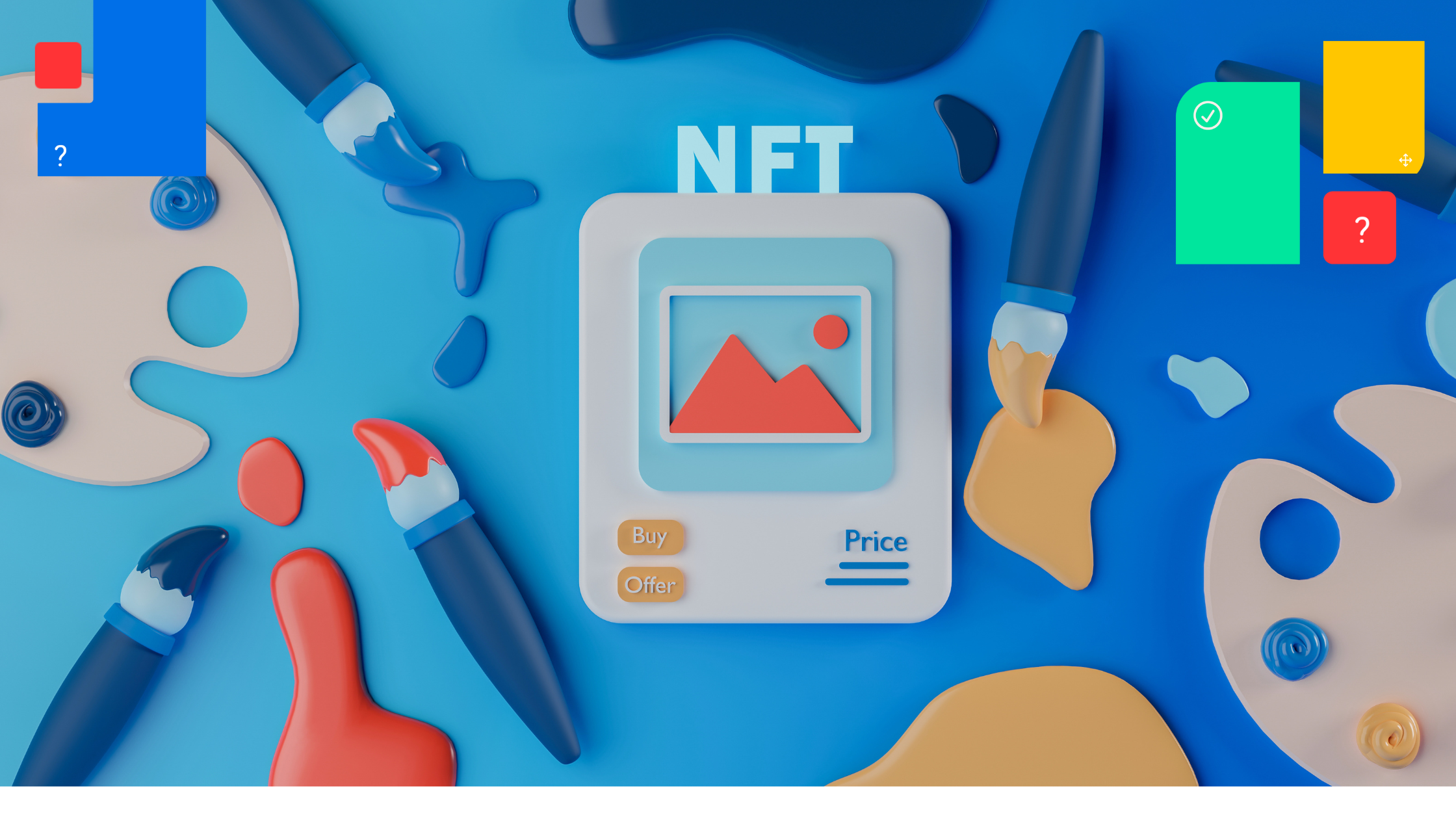
Building Consumer Awareness is Key for NFT Success
- November 26, 2022
- 5 min
NFTs offer brands multiple avenues to deliver value, but they will need to tackle the relatively low-levels of knowledge among consumers, according to Getwizer’s research.
Despite the dramatic downturn in the crypto market, NFTs (Non-Fungible Tokens) have been gaining momentum as powerful tools to help brands deliver value. Indeed, the top ten brands investing in NFTs list reads like a who’s who guide for corporate success. It includes Nike, Adidas and Tiffany, in the top three, and spans the worlds of sportswear, jewelry, fashion, publishing, brewing, automobiles, television and events.
The efforts of more brands to follow in their footsteps was boosted this November with Meta announcing that NFT collections can now be created and sold on Instagram. This will see a growing number looking to get serious about these digital collectibles, as they look at ways to promote their products and services through virtual assets and content.
So, Who Is Buying NFTs?
The popularity of NFTs is still relatively muted, according to new research from Getwizer, with just under 11% saying they actually own one or more. A further 20.5% of respondents say they are knowledgeable about NFTs, although they currently don’t own any. This leaves almost 70% of consumers that either don’t know much about them (35.4%) or have never heard of them (33.2%).
While the popularity of NFTs is limited, they do tend to resonate more with younger audiences. And for brands this is important. Getwizer found that 16% of under-25s, almost 20% of 25-to-34 year olds, and nearly 18% of those between 35 to 44 own an NFT. However, for older age groups, ownership rates plummet to under 9% for 45-54 year olds, under 4% for 55-56 year olds and only 3% for over 65s.
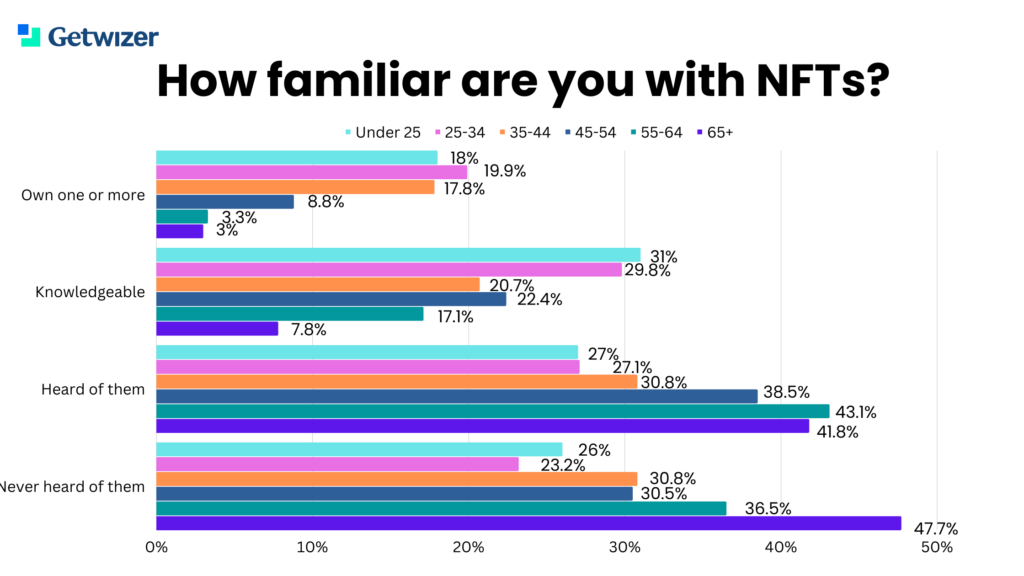
Men tend to be more engaged with NFTs, with the research showing that almost 15% own one, compared to just over 7% of women.
Ethnicity also comes into play, with ownership of NFTs being most popular among Hispanics (almost 16%) compared to Caucasians (less than 11%), African Americans (8.4%) and others (9.5%).
Is Interest in NFTs Growing ?
While only around one-in-ten of us currently actually have an NFT, Getwizer found 43% of consumers are interested in owning one. The research broke this interest in ownership down further, as follows, with:
8% extremely interested
12% very interested
23% somewhat interested
However, over 57% of respondents said they had little or no interest at all.
Interest in NFTs, like ownership, also differs depending on ethnicity. While only 4% of Caucasian respondents were extremely interested in NFTs, this compared to 16.5% of African Americans, 16.1% of Hispanics and 15.7% of others.
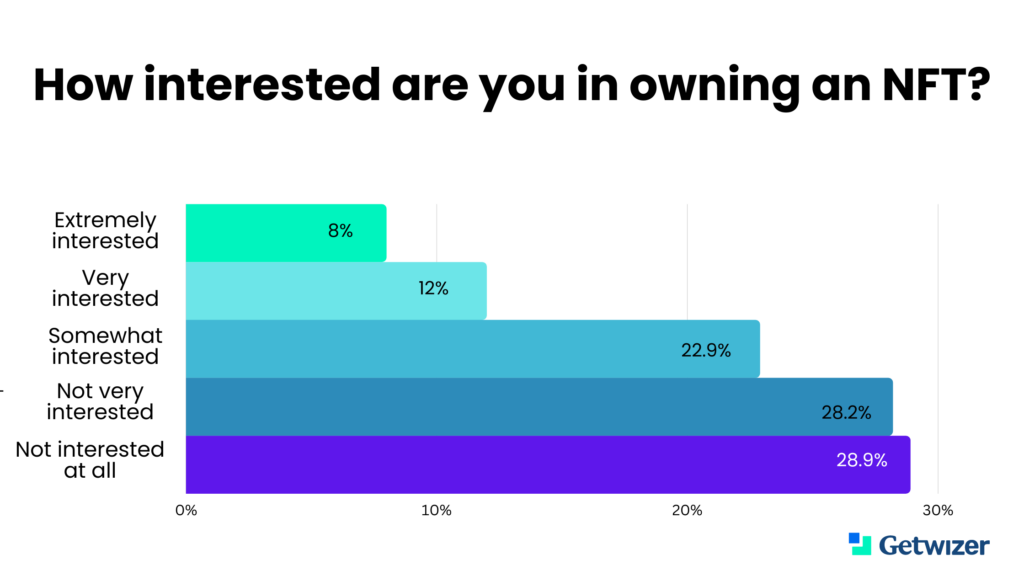
Opportunities for Brands
The top three NFT categories consumers are interested in, according to Getwizer’s research are:
Movies & TV Shows (37.5%)
Music or Music Videos (36.7%)
Video Games (35.4%)
These are followed by Artwork (24.6%), Photography (24.2%), Fashion (21.7%) and Sports Memorabilia (21.3%).
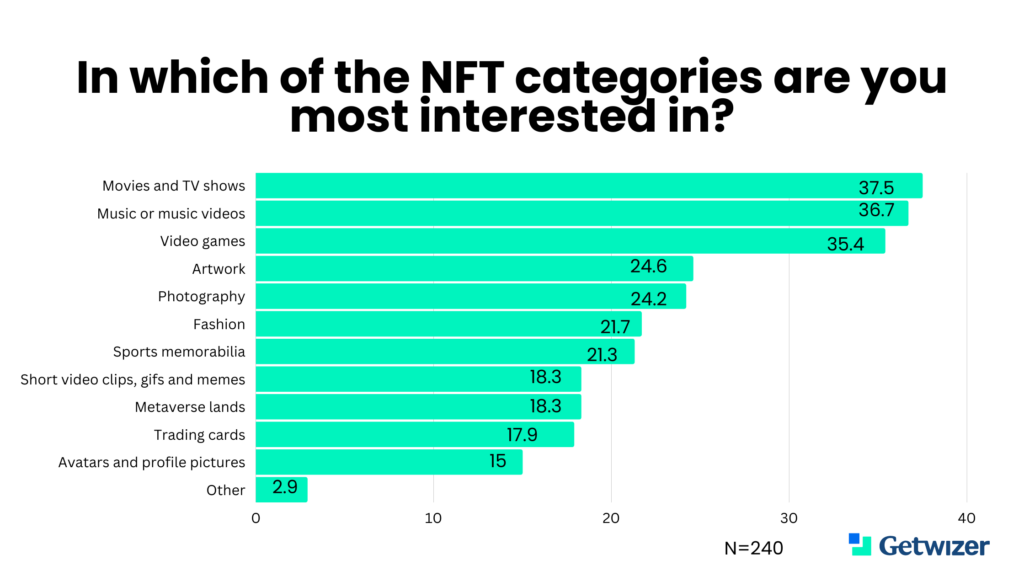
Given the limited interest among consumers in general, brands will need to increase NFT awareness and adoption among their customers and communities. Three tried and tested ways they can achieve this are as follows:
1. Integrating NFTs into existing products
Using NFTs as an extension of existing products has many examples in the sports and entertainment industry, where companies bundle physical products with NFTs to provide increased value to customers. Bud Light, for example, recently teamed up with the NFL to mark the start of the new football season with the launch of an “NFT-powered contest where fans compete for a chance to win a variety of prizes”.
2. Using NFTs to communicate brand story and values
Brands are increasingly using NFTs as tools to convey their brand history and values. To celebrate the 6th International Day of Women and Girls in Science in 2021, Microsoft unveiled the interactive educational game “Azure Space Mystery”. Participants were able to learn about the stories of four female scientists and earn Minecraft-compatible NFTs by using their technical skills to solve coding challenges. While this use of NFTs did not directly promote the Microsoft brand, it demonstrated the company’s ethos of promoting diversity and encouraging technological education among developers.
3. Promoting social causes using NFTs
While art and collectibles have always been a popular match for NFTs, they are increasingly being used to mix capitalism and community by promoting social responsibility and sustainability. Coca-Cola, for example, hosted an auction of special-edition NFTs with the profits donated to the Special Olympics.
To Summarize: NFTs Can Help Drive Consumers To The Metaverse
The growth of online commerce, the drive towards digitization and the birth of the Metaverse, means NFTs are providing brands with a vast array of opportunities to engage with consumers to offer value, educate or promote/fund social causes. And despite the need for increased levels of consumer awareness, the growing interest in NFTs as recorded by Getwizer’s research should see their value for brands increase over the coming years. In fact, NFTs could well be the bread crumbs of value that entice consumers to enter and engage with brands in the digital domain and metaverse, and that, for most brands, means NFTs could be priceless.
Check out Getwizer’s previous research on NFTs here to see how consumer sentiment towards them is evolving.
Get started
You too can test anything, anytime, over and over again.
We'll be in touch soon. Privacy settings

